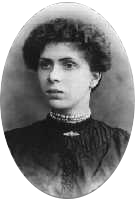How to find Your Local Wobbly History
One can find the forgotten Wobbly names and faces, strike stories, union halls and martyrs' graves in any city where the IWW earned its legendary reputation. It is easy to find thorough information on the luminaries, such as Tresca, Flynn and Giovanitti, but what about those local organizers who invited these major figures to town, and then kept working after they were gone, pouring the wine of rebellion into workers' hearts? It may take some time, but in all probability you'll find syndicalist monuments and hallowed ground that you walk past every day, but never knew existed.
Start at the nearest college library, and gather a short stack of general works on the IWW or any of its famous travelling speakers. Look in the indexes for the name of your town, and start making a list of the local numbers, companies where the IWW was active, and especially the dates of strikes and public appearances by well-known Wobs. The most active years will usually be between 1911 and 1920. Be sure to include the date September 5, 1917, when IWW halls across the U.S. were raided by federal agents.
Take the list to the nearest large public library, and go to the newspaper room. They'll have all the local daily papers from those early years on microfilm. In most places, there were many more papers than there are now. Start rolling to the day after each of the events you've found, and read the mainstream news accounts. This is the point at which you'll start saying "oh my goodness…" because there will be photographs, names, addresses and stories that you've never heard of, and some that no living person knows about.
Take down the addresses of the union halls and get on your bike: is the building till standing? In Philadelphia, there are two. When I rang the doorbell at one of them, I was happy to learn that its present occupants had found some old union handbills in the building, and they had some framed and hanging on the wall. Take down the names of IWW activists and look them up in the city directory (ancestor of the phone book) for the same year: is the home still there now?
Search every local historical facility for the names, as well as the National Union Catalog of Manuscript Collections. Here's where you may locate the personal papers of your long-dead comrades, and still more names, addresses, and other connections. If you find the date of someone's death you should look in the papers for an obituary, figure out where they were buried, and call up the cemetery. (Some libraries and historical societies maintain a file of local obituaries from the papers, organized by name, which can be a big help.) I got lucky and found the tombstone of the martyred Wobbly organizer Martin Petkus just a few miles from where I live. Martin was shot down by riot police during an IWW sugar refinery strike in 1917.
There will be thousands of minute details that will lead you to other details, and the thread will never end. Once you start hitting pay-dirt and getting acquainted with the labor activists who walked the same streets as you do, but long, long ago, this may become your hobby or even your obsession, as is the case with me. Now that you've been warned, sharpen your pencil and get to work. You'll benefit enormously from the help of librarians at every single step, so always be nice to them.
Robert Helms
From Anarcho-Syndicalist review #28, Spring 2000
ASR PO Box 2824 Champaign, IL 61825 USA
In KSL: Bulletin of the Kate Sharpley Library No. 22, May 2000
Subjects:
Similar items
- KSL: Bulletin of the Kate Sharpley Library No. 22, May 2000.
- Pateman, Barry. Fellow Worker : Barry Pateman reviews Cole, Struthers, and Zimmer, Wobblies of the World.
- Left of the Left: my memories of Sam Dolgoff [Book review].
- Anarchist history roundup July 2019 part 1.
- Brown, Tom. School for Syndicalism.
